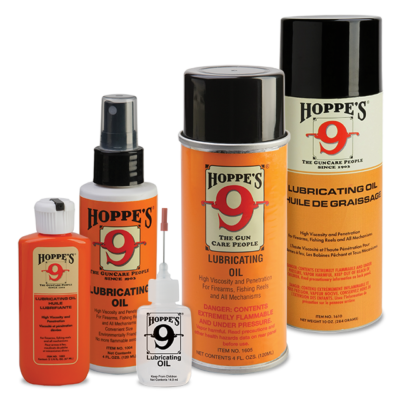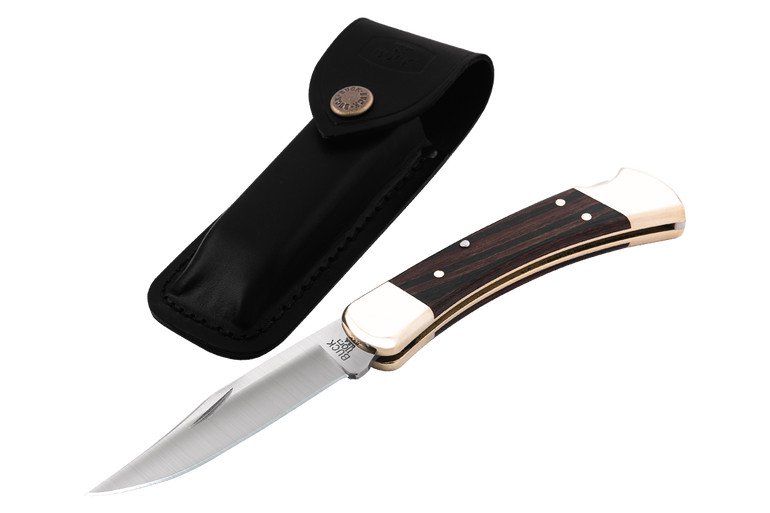by Reinhard Kargl
In online forums, people frequently ask if traditional oils such as 3-In-One (or gun oils such as Hoppe’s No. 9) are a good choice for use on pocket knives. Here’s my answer, based on some history and science behind it.

3-In-One oil was first sold in 1894. It was originally marketed for use on bicycles and bicycle chains. Over generations, it grew into a quintessential American product used on just about any moving metal parts imaginable – including millions of folding knives. Even today, many people still swear by it. It performs its main function (that of lubrication) very well, is widely and easily available, and costs only a fraction of fancy modern high-tech lubricants. (I might add that traditionalists often deride the latest lubricants as overpriced, overhyped snake oils). But is it the best option?

Old-school gun oils, such as Hoppe’s No. 9 or others, also lubricate very well (or even better) than 3-In-One. But all of these products have something in common: they were all formulated at a time when high-carbon steels were the norm for guns, knives and moving parts in machinery. These steels rust when coming into contact with oxygen, especially so in the presence of water. Therefore, old time lubricants include compounds meant to “stick” to the steel and isolating it from oxygen and water as much as possible. As other, shorter-chained hydrocarbons evaporate over time, a higher percentage of the longer-chained, more viscous compounds remain. In addition, all oils will eventually undergo chemical changes. They will also pick up dust and debris. All of this combines to make them more gummy, grimy, dry or gritty over a period of time.
Is this a problem in an application like folding pocket knives? Not really, but it depends. I believe the criticism of oils like gun oils and 3-In-One is mostly based on user error and therefore undeserved. What happened is that collectors have dabbed these oils on, and then put away their treasures without really using them for long periods of time. Surprise surprise: the moving parts became awfully sticky. And since collectors tend to be accepted as authorities and opinion leaders by the general public, negative assessments of traditional oils became blown out of proportion.
That’s not really a problem for the every day user who follows a simple rule of maintenance: Don’t just oil you pocket knife and put it away. Whether you do or don’t use it, clean the old lubricant off from time to time. Do this in regular intervals or before it comes gunky. Use some type of solvent (maybe just soapy water and an old but clean toothbrush perhaps). Then rinse and dry thoroughly, and apply fresh lubricant.
Another point to consider is the steel from which your pocket knife is made. The vast majority of today’s pocket knives are made from a number of types of stainless steels. Since these do not require the level of corrosion protection needed for older high carbon steels, why would you need the more problematic compounds included in old-school oils? For something like a Victorinox Swiss Army Knife (Ibach, Switzerland), or the products of Buck Knives (Post Falls, Idaho) – you probably don’t.

Another problem that may or may not concern you: 3-In-One oil and gun oils are not rated as harmless for human consumption. (That’s true for all petroleum-derived oils, with pure food grade mineral oil being the only commercially available exception I’m aware of). Does that matter? I doubt it, given the very small amounts of oil that might end up into your food. After all, you are not going to simmer your entire folding knife in your soup pot. (Hopefully). However, some of these oils may have a smell that could be unappetizing when you eat.

If you are concerned about toxicity, the old-school Ballistol, would be a non-toxic, extremely capable option. (I still would not recommend pouring it over your salad). Ballistol is the stuff of legend too numerous to recount here. It predates World War-I and has many highly compelling qualities. Among them are the very high stability and anti-corrosion properties, even on high carbon steel, and at great temperature ranges. Curiously, Ballistol emulsifies quite easily with water, which makes it even more slippery when it gets wet. German makers of carbon steel blades (for instance, OTTER-Messer of Solingen, Germany) actually recommend Ballistol to lubricate and inhibit rust on old-fashioned, high-carbon steel knives. They have even been known to ship some of their carbon-blades with a sealed Ballistol-soaked pad). Ballistol has a great number of uses around the house, which makes it a great, universal all-round product to keep around. The only downsides here: Ballistol has a mild but distinct sweet licorice-like scent, which some people find unpleasant. Conversely, other people love it. Another possible downside: it’s not very widely available. Then again, it is easy to order online these days.
If you are concerned about both toxicity and scent, the aforementioned food grade mineral oil would be an odorless alternative. A natural and plant based choice would be pure jojoba oil or “wax”, which comes from the seeds of Simmondsia chinensis, of a shrub of the North American Southwest. Refined jojoba oil is both colorless to slightly yellowish, and odorless. Yes, you could technically ingest it. But since our digestive system can’t break it down, it will basically function as laxative. (Even for that, it is not recommended).
Jojoba oil was reportedly used to lubricate machine guns in the past, probably because it is much more heat resistant than petroleum based old-school gun oils. A low percentage of triglycerides makes jojoba oil much more stable than other plant oils such as olive, grape seed, safflower, canola or almond oil. (Don’t put those in the moving parts of your folding knives. The same goes for animal fats such as butter or lard). Much cheaper than jojoba oil and available just about anywhere nowadays would be coconut oil. This one you can really eat. (If you have a high carbon blade used on food, it makes a good option for coating the blade, but not so much for the joints of a folding knife).
All that said, it must be remembered that none of these plant oils are nearly as stable as synthetic petroleum based oils or unique products like Ballistol. Also, the corrosion protection and lubrication capabilities of plant based oils in all temperature and humidity conditions are generally inferior to man-made lubricants – so beware.
Regardless of what kind of lubricant you use, my main recommendation is this: clean it off from time to time and apply fresh lubricant. Think of it as giving your pocket knife a regular oil change.
Bonus tip: If you use your knife to cut food (especially acidic things, like fruit), wipe it clean with a moist cloth immediately when the job is done. Then wipe it dry right away. (Even stainless steel isn’t totally “rust free”). And should you have a high carbon steel blade, rub on a little oil or fat. Don’t overthink this. Whatever kind of fat you have at hand will suffice. (Well, perhaps except salted butter). Sure, your carbon steel blade will discolor and form a “patina”, but that’s part of the fascinating aspects of carbon steel: no two blades will ever be the same – appealing to some, but not to others. Take it or leave it!
